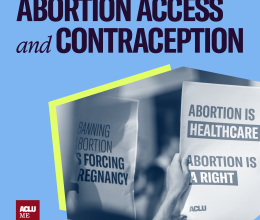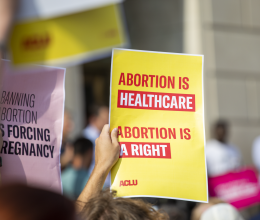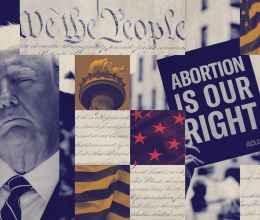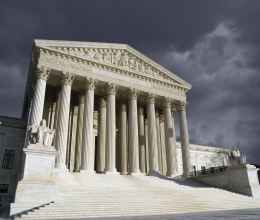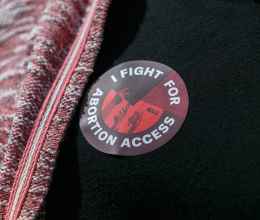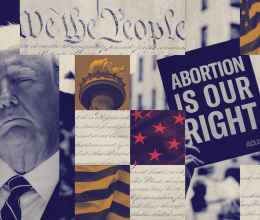Today, the Supreme Court heard one hour of oral arguments in McCullen v. Coakley, the Massachusetts case that takes up the issue of abortion clinic buffer zones and free speech. While no decision has been reached in the case, the majority of the justices seem to lean against the buffer zone, characterizing the law as an unfair and excessive infringement on First Amendment rights. Some Justices opposed the buffer zone outright, suggesting that the current law is a one-sided restriction against anti-abortion speech. Other Justices were more ambiguous in their statements, suggesting that a buffer zone might be necessary, but a 35-foot buffer zone was excessive. If you’d like to read a summary of the Justices' responses to the arguments, you can read a recap on the SCOTUSblog.
In 2007, Massachusetts instated a law that created a 35-foot buffer zone around entrances to abortion clinics. This law was in response to a history of violent and aggressive harassment outside of abortion clinics in the state, including killings at two abortion clinics in 1994. Since 2007, it is illegal for anti-abortion activists to cross the zone (demarcated by a yellow semi-circle) while attempting to dissuade women from utilizing the facilities. Eleanor McCullen, a 77 year-old anti-abortion activist, claims that the buffer zone in front of Planned Parenthood violates her right to free speech. She and her legal team contend that the buffer zone law is discriminatory because the law only applies to those protesting the clinic. Because of the buffer zone, she claims she misses opportunities to talk to women who are entering the facility. You can read more about her claims here.
Planned Parenthood employees and volunteers are resoundingly thankful for the buffer zone. One volunteer escort who asked not to be named said that the buffer zone helps decrease tension and helps clients find their way inside amidst the chaos of protest signs, pamphlets, and yelling. The buffer zone is small – the length of two parking spaces – and, according to buffer zone supporters, doesn’t prevent anti-abortion protesters from speaking with people who are trying to access the clinic. Martha Walz, the president of Planned Parenthood League of Massachusetts, was a member of the State House of Representatives in 2007 when the law was passed. She sees that the buffer zone has made a “tremendous difference,” turning a chaotic and threatening situation into one of “peaceful coexistence.”
Here at the ACLU, we believe that the outcome of this debate must protect both the free speech rights of the protestors and the rights of patients to access the health care they need. A friend-of-the-court brief we filed in the case stated stated the following:
The ACLU deeply believes that the volatile issue of abortion clinic protest must not be resolved by sacrificing either the right to access an abortion or the right to engage in peaceful political protest. Rather, the burden in each case is to arrive at a solution that accommodates both rights, and that does so in a principled way that is consistent with our constitutional tradition. This case once again poses the question of how that should be done.
In other news, the Supreme Court declined to revive an Arizona ban on abortions after 20 weeks. Governor Jan Brewer signed the restrictive ban into law in April of 2012. In 2013, the United States Court of Appeals for the Ninth Circuit deemed this law as unconstitutional as it conflicts with the viability standards put in place by Roe v. Wade (24 weeks after fertilization). The Supreme Court’s refusal allows this decision to stand for the time being. There are twelve other states with 20-week abortion limits: Alabama, Arkansas, Georgia, Idaho, Indiana, Kansas, Louisiana, Nebraska, Oklahoma, North Carolina, North Dakota, and Texas.
**updated to replace the characterization of the ACLU amicus brief with a quote from the brief.




